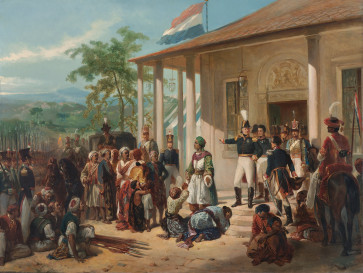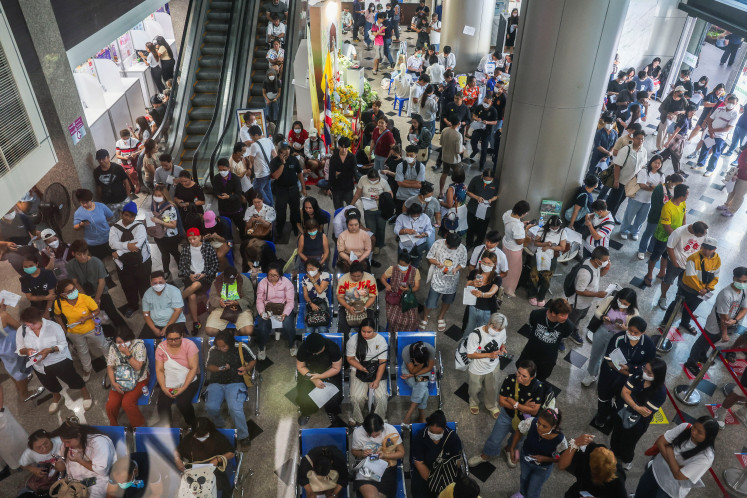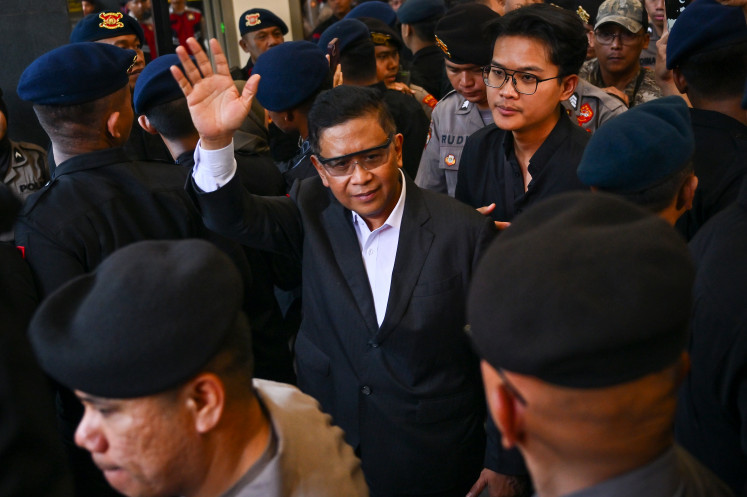Popular Reads
Top Results
Can't find what you're looking for?
View all search resultsPopular Reads
Top Results
Can't find what you're looking for?
View all search resultsDance ‘poco-poco’ and you won’t go ‘loco-loco’
Dancing toward healthy aging: Jakartans join a public poco-poco dance during Car Free Day on Sunday on a sidewalk on Jl
Change text size
Gift Premium Articles
to Anyone
D
ancing toward healthy aging: Jakartans join a public poco-poco dance during Car Free Day on Sunday on a sidewalk on Jl. Sudirman, South Jakarta. (Courtesy of Alzheimer’s Indonesia)
The poco-poco, a dance from Manado, North Sulawesi, is quite popular among Indonesians, mainly because of its humorous lyrics and casual aerobic movements.
Adults like to dance the poco-poco, preferably in big groups, in various community and government office halls as part of their weekly aerobics regimen.
Who knew that dancing the poco-poco could give you more benefits than a good sweat or a temporary endorphin rush? It can actually help you sustain your smarts longer, well into old age.
This isn’t pseudoscience. A study provides the evidence.
In her 2015 doctoral dissertation at the University of Indonesia (UI), Ria Maria Theresa, a lecturer at the Jakarta Veteran National Development University, discovered that people with mild cognitive impairment (MCI) and type 2 diabetes who danced showed more activity in their brain cells, particularly in the prefrontal cortex area regulating rational thinking, than those who did not dance.
Type 2 diabetes is a risk factor for MCI, according to Ria.
“If MCI is not treated for three or four years, it will become full-blown Alzheimer’s or another type of dementia,” she said.
The study took 32 subjects aged 45 to 59 years who suffered from type 2 diabetes and MCI and divided them into two groups. One performed the poco-poco three times a week for 30 minutes each, while the other did not.
Dementia refers to a decline in cognitive abilities and emotional regulation mechanisms, before disrupting the autonomous nervous system regulating vital life functions such as breathing and blood circulation.
The best known type is Alzheimer’s disease, in which brain inflammation produces plaque and tangles that sever the connection between synapses.
Alzheimer’s is not a normal part of aging. We may be able to keep it at bay using a method that has long been part of our society’s cultural traditions.
“The poco-poco requires dancers to perform a complex sequence of movements: moving back and forth, turning left and right, making a 360-degree turn, slanting at an angle, activating several brain parts at the same time,” says Ria.
Dancing, especially in a social setting, has been shown to help people’s brains stay sharper longer, according to Ria. A 2013 study found that people aged 65 and older with higher levels of social interaction were less likely to develop dementia.
“I’ve always been fascinated by senior-citizen dancers who are well into their 70s yet still active, healthy, mentally sharp and capable of performing any style of dance out there,” Ria says.
Alzheimer’s Disease International Asia Pacific regional director DY Suharya showed the dance to 1,000 participants from 30 countries at the organization’s European Conference in The Hague from Oct. 23 to 25.
“Alzi provides several poco-poco instructors to help Jakartans in their neighborhood units learn the steps,” Suharya says.

.img_assist_custom-780x395.jpg)








